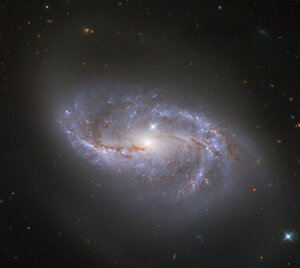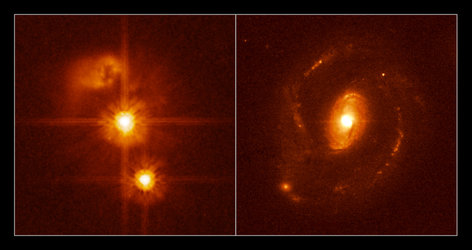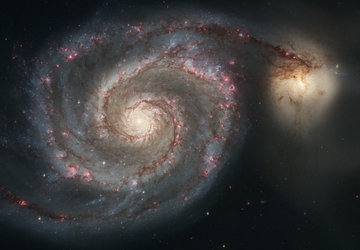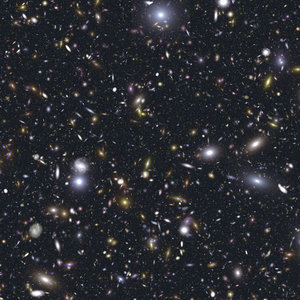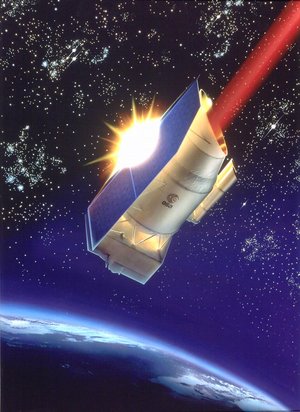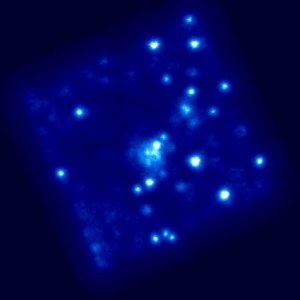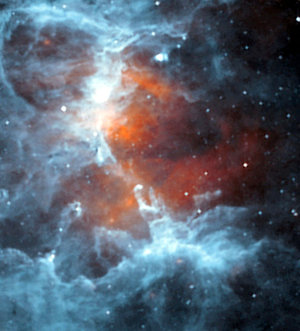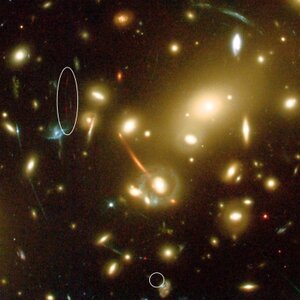Hubble celebrates 15th anniversary with spectacular new images
In the 15 years that the NASA/ESA Hubble Space Telescope has orbited Earth, it has taken three-quarters of a million photographs of the cosmos. Two new views have been released of Hubble's most well-known images: the Whirlpool Galaxy, M51, and the Eagle Nebula, M16.
The new images released for Hubble’s 15th anniversary are among the largest and sharpest views Hubble has ever taken, and were made with Hubble's Advanced Camera for Surveys (ACS).
The new Whirlpool Galaxy image shows the spiral galaxy's classic features, from its curving arms, where newborn stars reside, to its yellowish central core that serves as home for older stars. The new Eagle Nebula image reveals a tall, dense tower of gas being sculpted by ultraviolet light from a group of massive, hot stars.
NASA’s Space Shuttle Discovery launched Hubble into space on 24 April 1990 and placed it into orbit a day after, thereby opening a brand new era in astronomy. For the first time ever, a large telescope that viewed in visible light orbited above Earth's distorting atmosphere, which blurs starlight and make images appear fuzzy.
After installation of a new camera and a device that compensated for an improperly ground mirror, images of planets, stars, galaxies, and nebula began pouring in – all up to 10 times sharper than any previous telescope had ever delivered.
Long list of scientific achievements
During 15 years of viewing the sky, Hubble has taken more than 700000 exposures of more than 22 000 celestial objects. The spacecraft itself has whirled around Earth nearly 88 000 times, travelling more than 4000 million kilometres.
The orbiting observatory generates enough data every day - about 15 gigabytes - to fill more than three DVDs, and in total it has produced 23 terabytes of data, equal to the amount of text in 23 million novels.
Over 3900 astronomers from all over the world have used the telescope, and compiled a long list of scientific achievements, published in more than 4000 papers, such as:
- calculating the precise age of the Universe to be 13 700 million years old);
- confirming the existence of a strange form of energy called dark energy;
- detecting small ‘proto-galaxies’ that emitted their light when the Universe was less than a 1000 million years old;
- proving the existence of ‘super-massive black holes’;
- seeing a comet hitting Jupiter; and
- showing that the process of forming planetary systems is common throughout the galaxy.
The Whirlpool Galaxy
The two winding arms of the majestic Whirlpool spiral galaxy M51 (NGC 5194) are actually long lanes of stars and gas laced with dust, a hallmark of so-called ‘grand-design’ spiral galaxies.
Located 31 million light-years away in the constellation Canes Venatici (the Hunting Dogs), the Whirlpool's face-on view and closeness to Earth allow astronomers to study a classic spiral galaxy's structure and star-forming processes.
Some astronomers believe that the Whirlpool's arms are so prominent because of the effects of a close encounter with NGC 5195, the small, yellowish galaxy at the outermost tip of one of the Whirlpool's arms.
At first glance, the compact galaxy appears to be tugging on the arm. Hubble's clear view, however, shows that NGC 5195 is passing behind the Whirlpool. The small galaxy has been gliding past the Whirlpool for hundreds of millions of years.
The Eagle Nebula

A soaring tower of cold gas and dust about 9.5 light-years high, which is twice the distance from the Sun to our nearest star, rises from a stellar nursery called the Eagle Nebula, M16.
Inside the gaseous tower, stars may be forming. Some of the stars may have been created by dense gas collapsing under gravity. Other stars may be forming due to pressure from gas that has been heated by the neighbouring hot stars.
The tower's rough surface is illuminated by starlight and is silhouetted against the background glow of more distant gas. The colours in this image were produced by gas energised by the star cluster's powerful ultraviolet light. The blue colour at the top is from glowing oxygen and the red in the lower region is from glowing hydrogen.















 Germany
Germany
 Austria
Austria
 Belgium
Belgium
 Denmark
Denmark
 Spain
Spain
 Estonia
Estonia
 Finland
Finland
 France
France
 Greece
Greece
 Hungary
Hungary
 Ireland
Ireland
 Italy
Italy
 Luxembourg
Luxembourg
 Norway
Norway
 The Netherlands
The Netherlands
 Poland
Poland
 Portugal
Portugal
 Czechia
Czechia
 Romania
Romania
 United Kingdom
United Kingdom
 Slovenia
Slovenia
 Sweden
Sweden
 Switzerland
Switzerland











